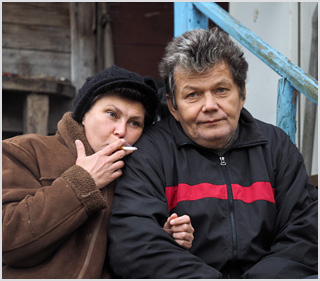Secondhand Smoke: Impacting Cancer Survivors
A new study found disparities in secondhand smoke exposure among nonsmoking adult cancer survivors. Those who had a smoking-related cancer and those who were socioeconomically disadvantaged had higher rates of exposure.

The adverse consequences of exposure to secondhand smoke – including that it causes thousands of deaths from lung cancer each year – are well-recognized.
For cancer patients and survivors, exposure to secondhand smoke has been shown to adversely affect health outcomes, according to Oladimeji Akinboro, MD, MPH, the lead author of a new study published recently in Cancer Epidemiology, Biomarkers & Prevention, a journal of the American Association for Cancer Research.
Secondhand smoke exposure can lead to higher death rates in cancer patients as well as higher rates of strokes and heart attacks in cancer survivors, as it does in those who have not had cancer, Dr. Akinboro said.
To assess the extent of the challenge posed by secondhand smoke exposure among nonsmoking adult cancer survivors, Dr. Akinboro, chief medical resident in the Department of Medicine at Montefiore New Rochelle Hospital in New Rochelle, New York, and his colleagues analyzed data for nonsmoking adults with a history of cancer from seven consecutive cycles of the National Health and Nutrition Examination Survey. Using that data set, the team estimated the percentage of nonsmoking adult cancer survivors in the United States who had evidence of secondhand smoke exposure.
They found that from 1999/2000 to 2011/2012, exposure to secondhand smoke among nonsmoking adult cancer survivors declined from 39.6 percent to 15.7 percent.
Certain segments of the population, however, had higher rates of exposure compared with others. For example:
- 55.64 percent of non-Hispanic blacks had been exposed to secondhand smoke compared with 26.14 percent of non-Hispanic whites.
- 35.54 percent of those with a history of a smoking-related cancer had been exposed to secondhand smoke compared with 26.33 percent of those with a type of cancer not linked to smoking.
- 53.25 percent of those with an income below the federal poverty level had been exposed to secondhand smoke compared with 22.8 percent of those with an income three or more times greater than the federal poverty level.
“We were surprised to discover that rates of secondhand tobacco exposure among nonsmoking adult cancer survivors were similar to those reported for the general population,” said Dr. Akinboro.
“Cancer patients and survivors must be encouraged to be their own advocates regarding secondhand smoke exposure, in adopting voluntary smoke-free home and vehicle rules, and avoiding settings outside the home where they are more likely than not to be involuntarily exposed to tobacco smoke,” added Dr. Akinboro. “Smoking household and social contacts of cancer patients and survivors also need to be engaged, and as a society, we can reduce secondhand smoke exposure by intensifying local, state, and federal measures and policies that prohibit smoking in the workplace, in public places, and multiunit housing.”
It is important, he said, to note that the researchers analyzed data that had been collected at a single point in time from a random selection of U.S. adults, some of whom were cancer survivors. Since the individuals were not followed over time, no single factor – such as race/ethnicity or income level or cancer type – can be attributed as being a cause of secondhand smoke exposure; they can only be associated, he added.
